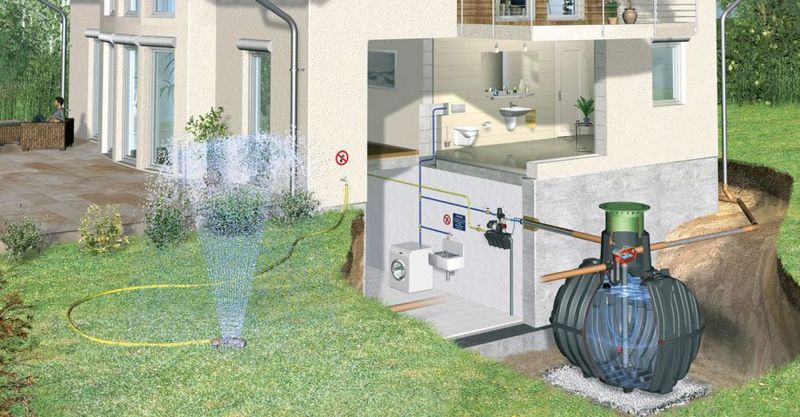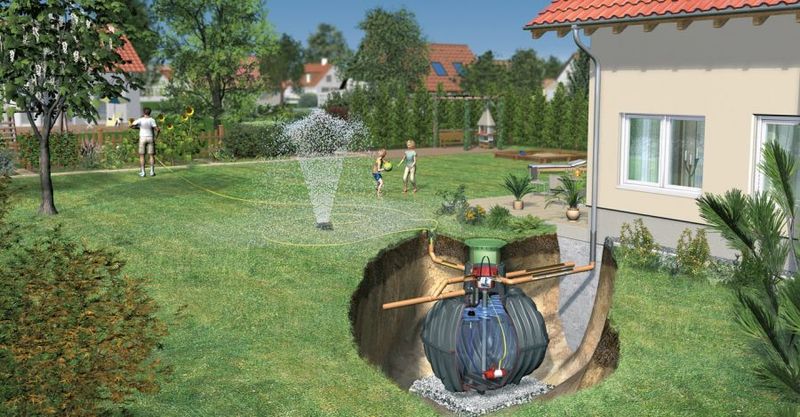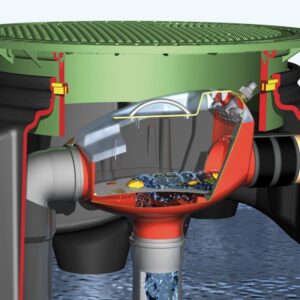Rainwater tanks come with numerous benefits.
Among other things:
They’ll help you save money on your water bills, provide effective water storage, increase the value of your property and help you protect the environment while also watering your garden.
Sounds great, right?
Indeed, it does.
But they’re going to do all that only if you look after them.
The question is:
How do you clean a rainwater tank? And what about regular maintenance?
At Drainage Superstore, we’ve put together your essential guide to cleaning a water tank and maintaining it properly.
Let’s crack on.
Table of contents:
- General rainwater harvesting maintenance
- How to clean a water tank
- How often should you clean your rainwater tank?
- Why you need to look after your rainwater tank
General rainwater harvesting maintenance

Whether your water tank provides domestic water suitable for drinking or grey water you use in the garden, you need to make sure it’s in top working condition and compliant with the appropriate rainwater harvesting regulations and BS EN 16941-1 – Requirements for on-site collection and use of rainwater.
Keep in mind that only qualified personnel should enter the tank at any point.
Having said that, this is what you need to do in terms of general maintenance:
Check the gutters and downpipes
Guttering and downpipes play a crucial role in your rainwater harvesting system by directing water to the tank. They’re also easily blocked by debris, leaves and dirt, especially during the autumn, causing all sorts of trouble – and not just to the tank.
So, you need to be on your guard, inspect and clean the gutters and downpipes on a regular basis and trim any overhanging tree branches. It’s also a good idea to invest in quality gutter brushes, as they’re going to make your life a lot easier, especially if you have lots of trees in your garden.
Check the filter
Inspect the filter at least once a year to ensure it’s functioning properly. If something’s wrong with it, you’ll notice the water colour change and the smell become foul. When necessary, clean the filter in accordance with the manufacturer’s instructions.
Check the pump
Inspect the pump carefully to prevent any leaks and carry out test runs to ensure it’s not malfunctioning. This can become an issue after heavy thunderstorms or flash flooding. But even if there haven’t been any lately, you should do this at least once a year, just to be on the safe side.
Check the mains backup supply
The mains backup water supply should switch on whenever the rainwater level is too low. To prevent any accidents, test the system by moving the float-switch to different levels. If backup water doesn’t flow in automatically, you need to call in the professionals for a thorough examination and repair.
How to clean a water tank
In addition to carrying out standard maintenance tasks, you shouldn’t forget about cleaning your water tank. After all, a clean water tank is a happy, high-performing water tank.
And while the exact procedure when cleaning water tanks will vary from one manufacturer to the next, the general sequence of steps is as follows.

Step 1: Empty the rainwater tank
Drain the rainwater tank completely. You might want to attach a garden hose to the tap or valve so you can water your garden plants or trees or collect the water in buckets to be used for other purposes later, such as washing the car. This way, you’ll avoid any unnecessary wastage.
Step 2: Clean the tank
Prepare a mixture of detergent and hot water. Using a water hose or hot water washer, thoroughly clean the inside of the tank. Pay special attention to the joints and corners of large water storage tanks since that’s where dirt is most likely to accumulate over time.
Once you’re satisfied you’ve covered everything, allow the cleaning mixture to stay in place for a couple of hours and make yourself a nice cuppa. You’ve earnt it.
Step 3: Rinse the tank
Refill the tank with mains supply water and rinse it. You’ll probably have to do this several times.
But how do I know exactly how many times, I hear you wondering?
Your rule of thumb here is:
When the water coming out is clean, you’ve done enough. Use this opportunity to check for and note any leaks.

Step 4: Disinfect the tank & pipes
No water tank cleaning job is complete without sufficient disinfection. This is also where domestic water tank cleaning differs from grey water tank cleaning.
Here’s the deal:
If your tank is a source of drinking water in the home, water tank chlorination is absolutely essential.
Once you’ve established its current level, add further Sodium Hypochlorite until it reaches the required level, typically, 50PPM (parts-per-million) free residual chlorine. A technician will then have to check the system to ensure everything is in order.
In contrast, disinfection is a lot easier if your tank is garden and grey water only. Here, simply apply a liberal amount of anti-bacterial spray to disinfect the tank and pipes.
Step 5: Recommission the tank
Depending on the PPM, chlorinated water in your domestic water tank might have to be neutralised with Sodium Thiosulphate. If that’s not the case, or you have a garden-only rainwater tank, all you need to do is fill it up with water, allow the water to sit for around half an hour and flush the system one final time.
Now you can make the most of your clean water tank!
Last but not least:
If your tank supplies drinking water, fill it up halfway with mains water and measure the total dissolved solids (TDS) and chlorine levels. The former should be within 5% and the latter between 0.5 and 0.1PPM.
How often should you clean your rainwater tank?

The answer to this question depends on whether your rainwater tank is a supply of drinking water or a source of grey water for the garden or for flushing toilets.
Check this out:
The Drinking Water Inspectorate, an independent UK water supply regulator, recommends that drinking water tanks be cleaned at least once a year. We would go one step further and suggest cleaning yours once every six months or so, especially if you’ve had it for a good few years.
Naturally, rainwater tanks used to store and supply grey water only are less demanding.
That being said:
You should still clean and disinfect yours thoroughly every one to two years.
In addition to scheduled cleaning jobs, you need to clean your rainwater tank whenever you notice a sharp deterioration of water quality, plant growth or debris accumulation or in case of a local outbreak of Legionnaires’ Disease or any waterborne infection.
Why you need to look after your rainwater tank
The practical and environmental benefits of rainwater harvesting are considerable. The process allows you to make the most of what is essentially a free resource in the shape of rainwater. You’ll be able to improve sustainability, prevent your garden from flooding and reduce your water bills.
But as with all things in life, successful rainwater harvesting requires a certain amount of effort on your part.
The thing is:
You can only reap those benefits if your rainwater harvesting system is in good working order, without any blockages, leaks or contamination.
Luckily, maintaining and cleaning a water tank has never been easier! Follow our guide, and you’re good to go!













